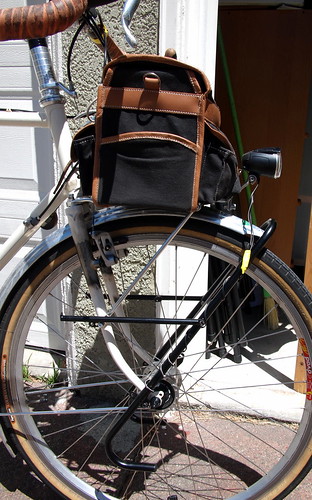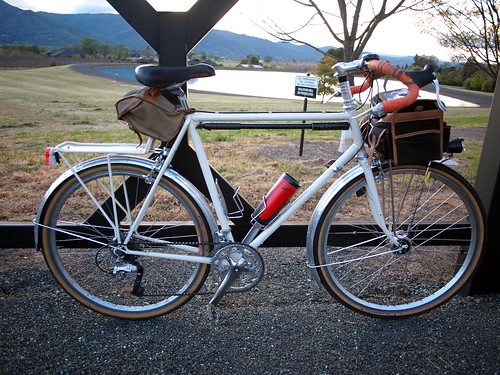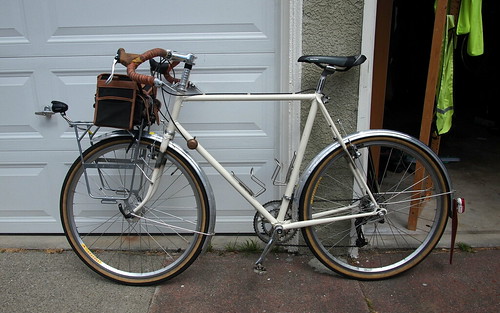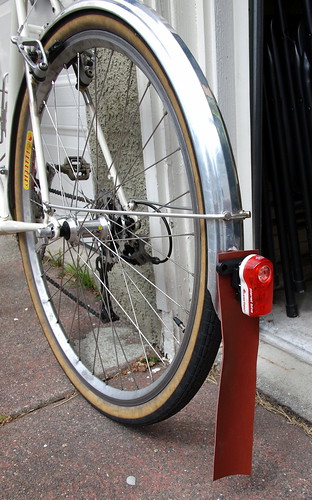 |
| Quarter way in the right, about to enter Big Basin State Park |
The year 2012 has been a tough one, unexpectedly. We signed up for a challenge at our local spinning studio to train for and complete a challenging cycling event in late 2011 and started the training really well. We
followed the base phase fairly religiously, and worked up our mileage in
December to about 70 miles. And at the end of the year we were able to ride over
the top of Santa Cruz mountains with a touring load at our end-of-the year tour.
We even participated in the 3-hour year-end spin class.
Soon after that, a string of circumstances hit us which left us dealing
with the aftermath ever since. We flew to S. Carolina to attend to M’s mom
in January, and she passed away soon after that in February. M. had a series of
health issues (probably stemmed from the trauma of loss) that prevented her from
doing any exercise for about 6 weeks. While I continued to train and was still
on target to ride our initial planned event for the Challenge the Davis Double,
it became apparent that M. wasn’t going to be ready. We decided to switch our target to the Santa Cruz Mountains Challenge (SCMC), which was later in the year. While SCMC only had half the length as the Davis Double, it has almost twice as much climbing (> 11000 ft of elevation gain).
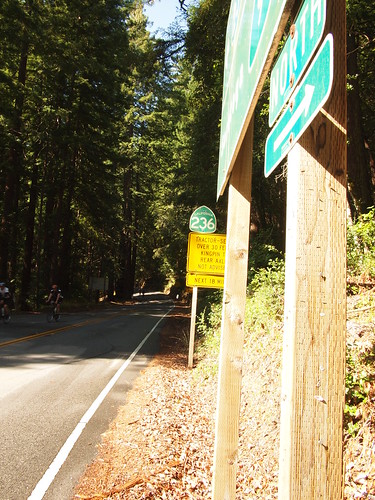 |
| Corner of HWY 9 and Big Basin HWY |
I was able to attend spin classes in May and June and we rode outside with increasing distance almost
every week in those two months. All the while wearing our HRMs and keeping a tap
on our efforts. I was on track at the end of June, after riding brevet style
(unsupported) from Ukiah to San Francisco in approximately 10 hours—the best
time I have ever done for a 200k ride. July turned out to be super
busy for us with a combination of work and school. We rode in Mt Tam 3 weekends
in July with increasing amount of hill climbs to prepare for the SCMC, and began felt confident that we would be able to complete the event. Then on 12
days before the event, I felt a scratch in my throat, and despite my best effort
to fight it off, the cold floored me, then M. for the next week and
half.
Back to the water stop at mile 10 before the turn onto Bear Creek Road.
We told each other that we will try to do our best, and just enjoy the
ride. We rode on with a sense of resignation, but also felt more relaxed. We got
to the first full rest stop at mile 20 at Skyline. After chowing down rest-stop
food, and looked at the map, we realized that we had climbed 3500 feet in
the first 20 miles, and therefore had completed 1/3 of the climbing already!
With this realization came the encouragement that we might be able to get close
to finishing the ride after all.
Let me go back to Mountain Charlie Road, which was the first climb of the
day. It started at mile 2, and went up almost 1500 ft (including two side
streets near the top) in 4 miles to Summit Road on a narrow, winding, and absolutely
beautiful road. We are accustomed to much more warming up than the rolling first
2 miles leading up to the foot. Lots of very fit cyclists passed us on the way
up and made the climb seemed easy, but it was definitely a beast. It was on this
climb that we were shaken and felt strong doubts about our ability to
finish.
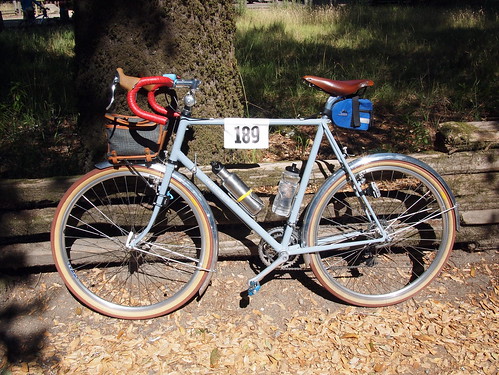 |
| Ebisu at the Headquarter of Big Basin State Park |
The second major climb of the day is Jamison Creek Road in Big Basin State
Park 20 miles after the first full rest stop. The transitional section is a
gorgeous stretch of rolling, quiet, covered, and beautiful roads in and near Big
Basin State Park. Jamison Creek is relatively a short climb in comparison with
the long cols of the Death Ride, but rises up sharply. The route sheet says that
Jamison Creek climbs 1500 ft from HWY 236 to Empire Grade in 3 miles. Not all
three miles of this road are equal, either. The road starts out relatively
gently to pull you in, making you think that you are having a good day on a
famously steep road, then all of a sudden a “gotcha” hits you in the face
approximately half way in, as gradients hit up to 14% or 15% all the way to the
end.
 |
| M's Ebisu taking a break after Jamison Creek |
 |
| Me at the top of Jamison Creek |
 |
| The only dirt section of the day--outside the lunch stop |
Because of the detour, we ended up being one of the last people finishing,
even though we both felt pretty good at the end. It is by far the most difficult
ride we did in 3 years since the Shasta Super Century we struggled through in
2009.
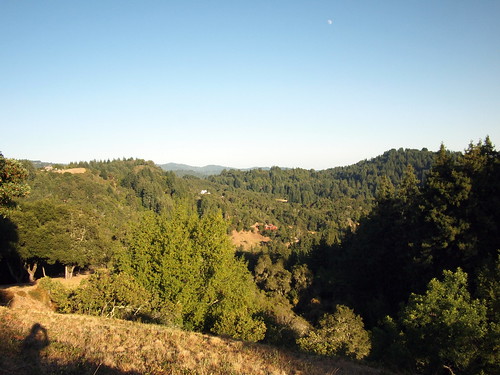 |
| A nice view near sunset; near completion of the ride |
I was about the only person riding a randonneuring machine, and many roadies, friendly or not, made sure I know about it. There was another guy on a Klein that had metal fenders on. I was chatting with an older gentleman riding on a carbon fiber Time about our respective machines. I think my set up might be close to a full 10 lbs lighter than his (mine weighs in at about 27 lbs with rack, fenders, and a bag). I told him that I lost almost 20 lbs in the last year, which more than cover than 10 lbs differential between his and my bike. Both of our Ebisu performed really well for us--smooth and comfortable, responsive during spirited pedaling, and no creaking sounds throughout the ride! My 42mm tires allow me to keep my lines on several long descents where the pavement is rough. On a well-supported ride in the Bay Area summer I should be able to ride an open-wheel lightweight racing machine, but the Ebisu isn't really what's holding me back--that would be my own legs.
